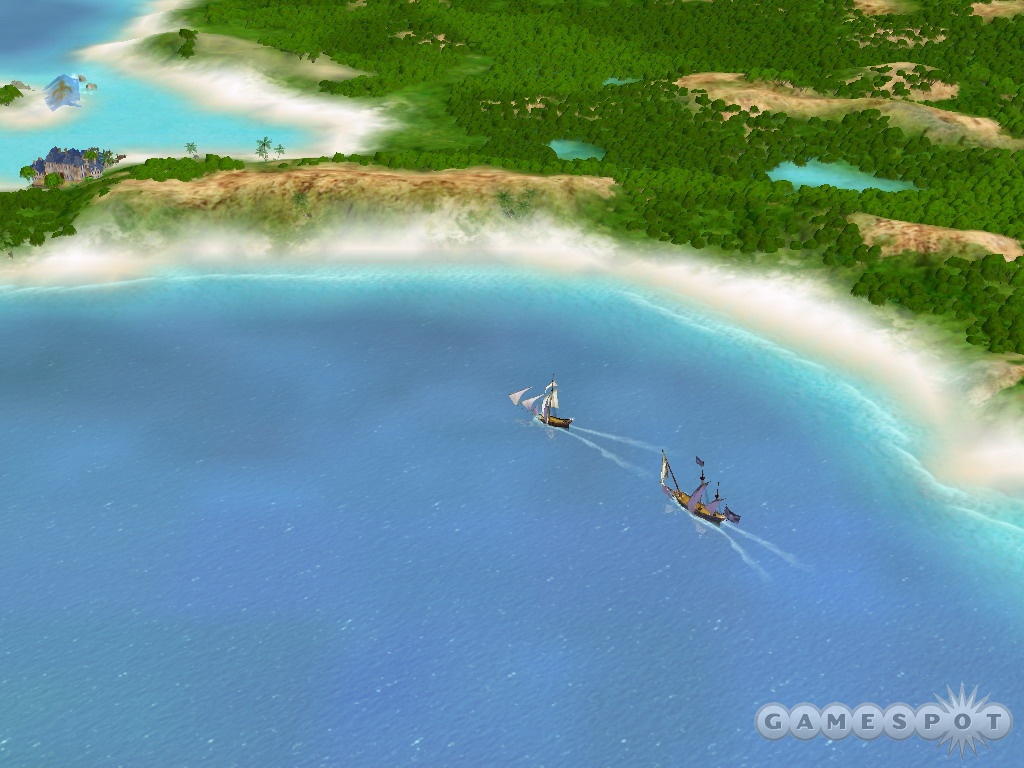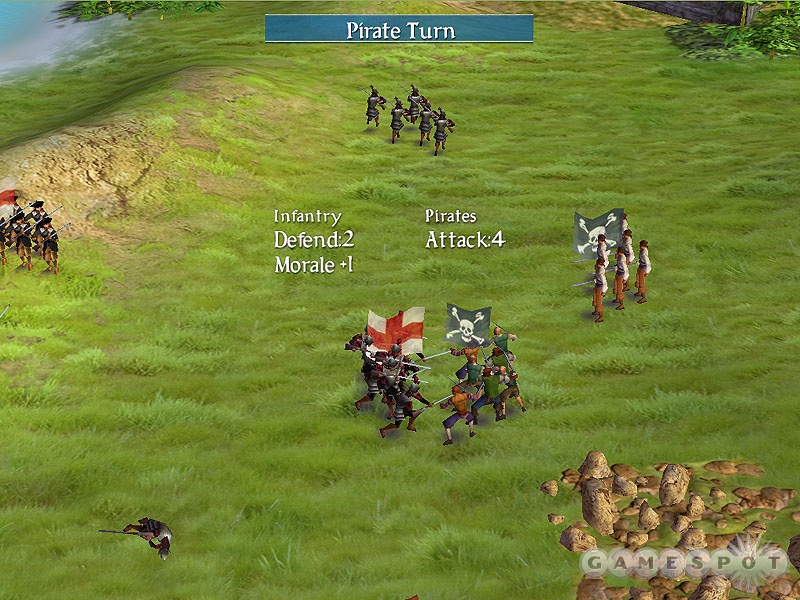Sid Meier's Pirates! Designer Diary #4
Associate producer Dan Magaha reveals the secret to good game design at Firaxis.
With Sid Meier's Pirates!, famed designer Sid Meier will attempt to remake one of his greatest games. The original Sid Meier's Pirates!, which debuted in 1987, was an addictive blend of action, strategy, role-playing, and adventure. In the upcoming remake, you'll once again take on the role of a dashing, heroic young pirate of the Caribbean, looking for fame and fortune, as well as some romantic interludes with fetching governors' daughters. In this edition of our designer diaries, associate producer Dan Magaha discusses the many challenges involved in making a game like Sid Meier's Pirates!, and what the secret to the company's game design is.
Tornado Wrangling
By Dan MagahaAssociate producer, Firaxis Games
At Firaxis, we've dedicated ourselves to creating the most compelling, fun games in the world. That's a tall order, but then again, we also have a not-so-secret weapon that goes by the name of Sid. And we utilize a development process--iterative prototyping--that complements our strengths as a company and helps us stay focused on our goal of creating great games that will stand the test of time.
In this diary, I'm going to discuss some aspects of iterative prototyping, and our production process in general.
You've all heard the cliché about how games were made back in the good old days, where one or two people would make a best-selling game "out of their garage." These days, it's a much more involved and complicated process, with dozens of people working together, writing thousands of lines of code, building tons of 3D models, and recording hours of sound. At the center of all this chaos are producers. On Sid Meier's Pirates!, there are two producers: Barry Caudill, who heads up the PC side of things, and me; I'm primarily focused on the Xbox version of the game. It's our job to harness this tornado of assets, ideas, and energy, and steer it across the finish line in the form of the most entertaining and highest quality product possible.
Just as there is no perfect formula for writing an engrossing novel, and no secret technique for painting a masterpiece, there isn't a single way of producing a game that guarantees it'll be fun. (If you have one, let us know and we'll trade our ping-pong table for it.) However, many game developers start with a design document. Design docs are exactly what they sound like: a reference piece that explains the important design considerations of the game. This can include everything from backstory and plot to diagrams of levels and charts listing out all the objects and locations that have to be created. The idea of a design doc is that the designer writes it, and then everyone uses it as a blueprint for building the game, exactly as it's described.

This leads to a plethora of unforeseen, interesting issues that can come up in the development process. For instance, what happens if the game is completed exactly to the specs listed in the design doc, but just isn't fun? Or if an unforeseen technical issue, caused by one of the design requirements, causes the game to run at an unacceptably low frame rate? And the list could go on and on...
At Firaxis, we use a different process, one that we've found to be extremely effective at helping us "find the fun"--iterative prototyping. It's a lot simpler than it sounds: iterative, because we work in a cyclical fashion, taking a pass at improving the game, stepping back to evaluate it, then building on that foundation with the next pass; and prototyping, because we start with simple models and simulations of things and then connect everything together once we've nailed the really good stuff.
Keeping it Fun
Most people know that Sid Meier has made some amazing games in his career, but what many people don't know is just how fast he puts together working, playable, fun prototypes. SimGolf, for example, was literally prototyped in a couple of weeks. I can remember coming into work one Monday, back when we were still working on the dinosaur game, and Sid calls us all into the common area to announce that he was thinking about a golf game. And then he fires up a fully working prototype, complete with little golfers and hazards and sound effects. Everyone was completely blown away.

Pirates! began to take shape in very much the same way. About a week after Sid jumped onto the project, everyone in the company was glued to their desks playing the new 3D ship battle prototype he had created, raving about how much fun it was to try dodging cannonballs with the small, nimble ships and how satisfying it was to revel in the war galleon's booming salvo of cannons.
This isn't to say we hit it out of the park on the first swing; on the contrary, one of the most important aspects of iterative prototyping is the continuous feedback loop. Sid is constantly testing out new ideas and releasing them on his unsuspecting guinea pigs (that'd be us) in the never-ending quest to refine the gameplay and increase the fun factor. In fact, this process continues through the majority of the project, a testament to the fact that we're never "done" until it's done.
Of course, there's a catch. There's always a catch! In this case, however, that's a good thing. During the feedback process, we may (and often do) discover that something we thought was going to be really fun just isn't. Or we come up with a better way of doing something. Or someone sends us a bribe of cash or fine chocolates to get their favorite feature into the game. Wait, that last one's never happened. And even if it did, you couldn't prove it.
In any event, we sometimes need to go back and rethink our approach to a particular part of the game, and although this wreaks havoc on our nice, neat Microsoft Project files and sometimes threatens our sanity, we gladly hold on and ride the wave.
A great example of this is the Pirates! land battle. The first iteration of this part of the game utilized mechanics that were similar to Sid Meier's Gettysburg!. It was real time, with flanking, routing, and other familiar elements. Despite the fact that it seemed like a great approach, it just didn't feel right. So, Sid returned to the drawing board and came back with a turn-based model that now fits the game like a glove, while still retaining the great aspects of the first iteration. Of course, this meant reprogramming a number of components of the original land battles, and it posed new challenges, both to art and code that we hadn't anticipated or planned for, but this is why good communication--another skill of a good producer--is so essential to a successful project. In the pursuit of fun, we know the end always justifies the means, so the team redoubled their efforts to make sure Sid had everything he needed to realize his new vision. There is no doubt the game is better because of it, and that makes it all worthwhile.
If it sounds like there's never a dull moment here, that's because there isn't! Being a producer at Firaxis means you're always on your toes, ready for the next challenge and constantly working to keep our brilliant team members happy and energized. And though we don't have the luxury of planning our entire project off of a design document, we do enjoy the flexibility to try new approaches and experiment with new and creative ideas, and that in turn means better quality and more fun. And ultimately, that's what we're all about!
Got a news tip or want to contact us directly? Email news@gamespot.com
Join the conversation